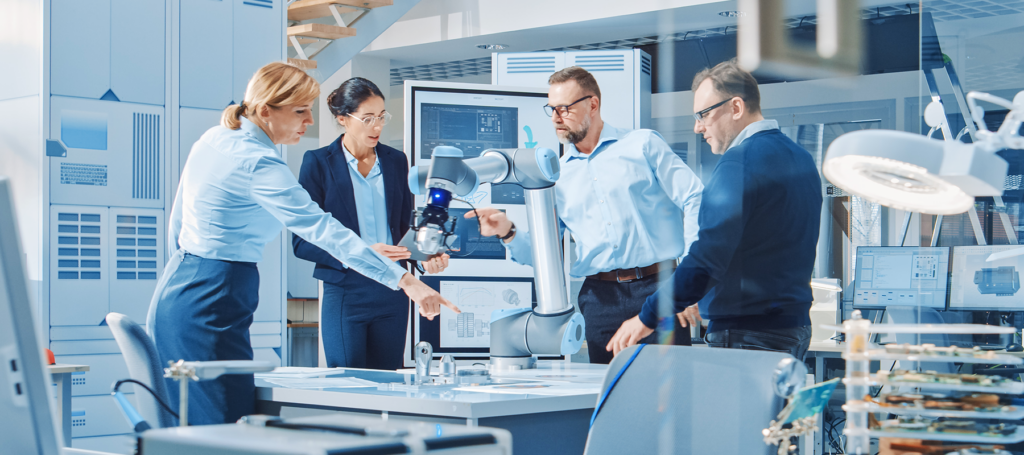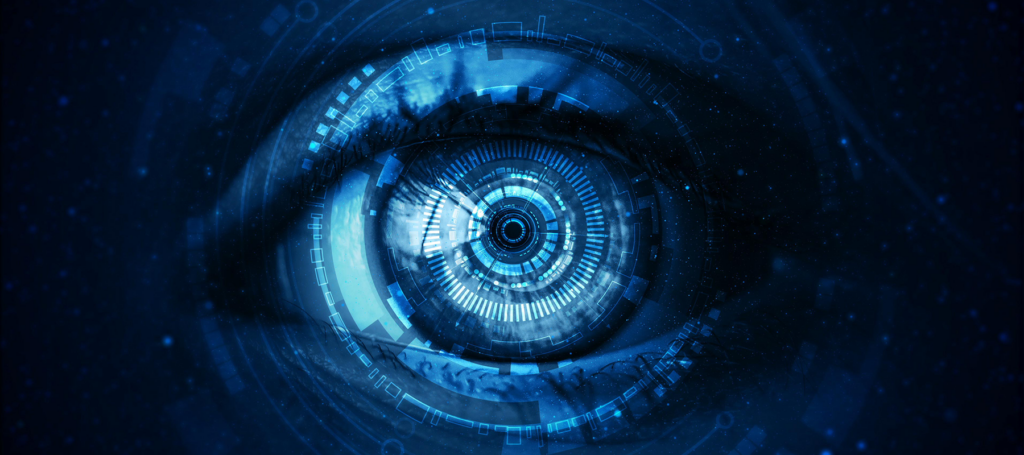Insights
Product Development in the Metaverse

We previously covered the benefits of outsourcing your product development and the importance of getting on board with the Internet of Things (IoT). Here, we discuss the state of what will be the next game-changer in product development: the metaverse, which today exists in name only. And we discuss what does exist today: XR (extended reality), the overarching acronym for AR (augmented reality), VR (virtual reality) and MR (mixed reality)—capabilities that offer immediate benefits for the world of product development. These capabilities are a major portion of the framework for what will be the metaverse.
Let’s look at what the metaverse means. As with most terminology, it can mean different things to different people, departments, and companies. William Burns III defines it as “a collective virtual shared space, created by the convergence of virtually enhanced physical reality and physically persistent virtual space, including the sum of all virtual worlds, augmented reality, and the Internet.”
Today, though, it is more like a collection of disconnected applications, just like you have on your smart devices or PC. Nonetheless, the time to jump in is now, as we shall illustrate.
The Metaverse Today
By no means is the metaverse, which today primarily consists of AR and VR apps, intended to replace human interaction; quite the opposite, it should enhance it. The metaverse presents product developers with fascinating new opportunities to engage and collaborate with their teams and customers.
For example, product digital models (think 3D CAD) come alive in the metaverse. Product developers can take the geometry they have been creating for decades and leverage it in the metaverse. Activities such as brainstorming, prototyping and design reviews gain incredible new heights of collaboration with the spatial computing capabilities that are built in.
Teams can meet across the Internet and explore possibilities in an immersive 3D environment. In fact, many of these applications are inclusive and allow for a wide range of participants: not only for those with a VR headset, but also for those connected via a Web browser, a smartphone or a tablet.
Three dimensional product models are well documented as the basis for XR applications. It is other product data that is not typically considered visual or immersive that will get a huge boost in the metaverse. Prodigy recently created the world’s first VR Bill of Material (code named “BOMvr”) prototype application using OpenBOM (a cloud-based BOM management application), noda.io (a VR mind-mapping application and datavisualization toolkit), GrabCAD (a cloud-based CAD data management tool) and Losant (an IoT platform). Users are literally immersed in the BOM and multiple participants “fly around” the data in real time, collaborating and making changes. View video of BOMvr.
Good collaboration in product development has always been key and the metaverse further reduces the need to be physically present for meetings, while retaining the important element of physical body language and facial expression. Because many of the VR apps are for multiple people, team activities are still possible. Companies are learning how to be more creative and can more easily, and at less cost, bring teams together from across the globe.
Travel budgets are being replaced by technology spend. Think of this: Instead of being in a typical Web meeting (e.g., Teams, Zoom) where each person is on camera and where each participant can only share their screen one at a time, imagine a fully immersive environment where everyone has an avatar that relays their expressions and body language while they share their screens simultaneously and bring in 3D digital assets as needed.
Preparing for the Metaverse
Companies will find that they already have digital assets from years of product development that will provide a foundation for exploring the metaverse. To prepare for the day the metaverse becomes a ubiquitous tool, companies should be answering these questions:
- How are we structuring our data? 3D formats in the metaverse are vastly different than in traditional CAD tools.
- How are we storing our data?
- How are we securing our data?
- Are we following accepted standards?
The metaverse is in its infancy, but NOW is the time to begin exploring possibilities. Grab a $300 Meta Quest 2 headset and jump in. You can leverage many of the most compelling environments or applications for free and only spend a modest amount for more advanced features.
In the coming months, Prodigy will share experiences on social media that demonstrate which tools and technologies offer the most compelling use cases in product development, both today and tomorrow.





